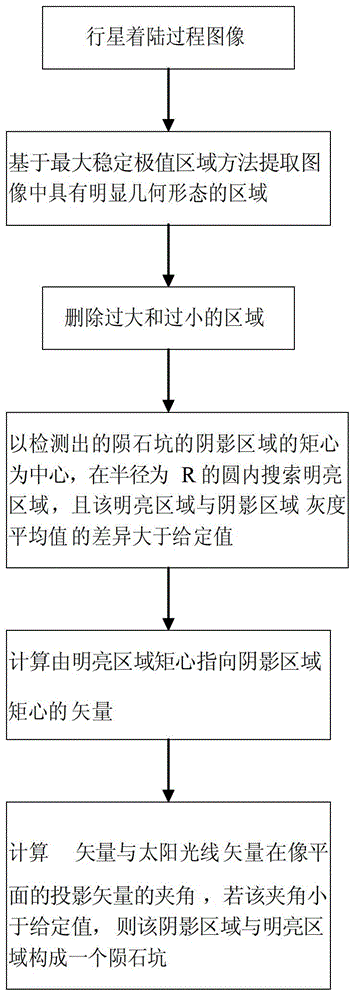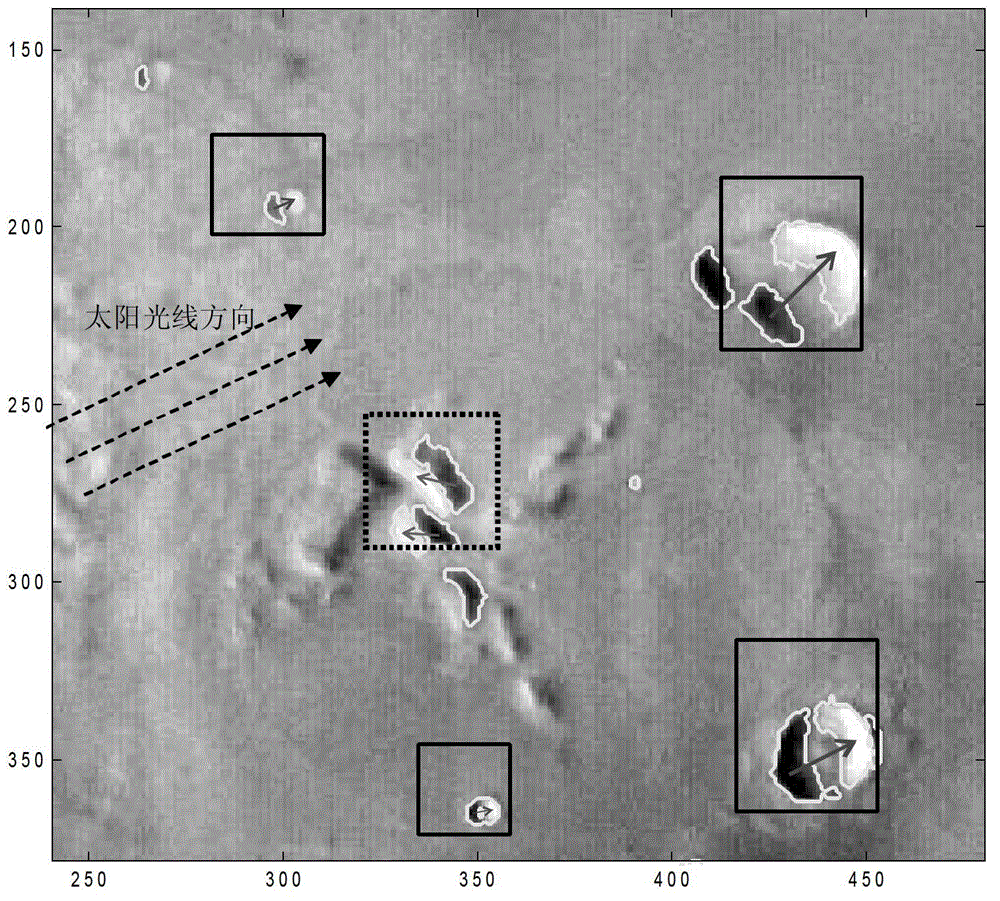Meteor crater detecting method based on bright and dark area pairing
A detection method and crater technology, applied in the field of image processing, can solve the problems of high mis-extraction rate and difficulty in detecting irregular shapes, etc., achieve high real-time performance and improve the accuracy rate
- Summary
- Abstract
- Description
- Claims
- Application Information
AI Technical Summary
Problems solved by technology
Method used
Image
Examples
specific Embodiment approach 1
[0022] Specific embodiment one: the crater detection method based on light and dark area pairing of the present embodiment, the steps are as follows:
[0023] Step 1: Use the method of maximum stable extremum area to conduct preliminary detection on the image taken by the optical camera during the landing process of the planetary lander, and extract the shadow area and bright area in the image;
[0024] Step 2: Delete the areas of K and M in the shadow area and bright area extracted in step 1, and obtain n shadow areas D formed by light 1 、D 2 …D n and m bright regions L 1 , L 2 …L m , where n and m are natural numbers;
[0025] Step 3: Calculate the k-th shaded area D among the n shaded areas in Step 2 k centroid of by As the center, search for bright areas in a circle with radius R, and find p bright areas, 0≤p≤m; among them, D k Indicates the kth shaded area, and the value of the subscript k is 1, 2...n;
[0026] Step 4: Among the p bright regions searched in st...
specific Embodiment approach 2
[0049] Specific implementation mode two: the difference between this implementation mode and specific implementation mode one is: the steps described in step three
[0050] R = 2.13 | D | ,
[0051] Among them, |D| represents the sum of the pixels contained in the shaded area D. Other steps and parameters are the same as those in Embodiment 1.
specific Embodiment approach 3
[0052] Specific implementation mode three: the difference between this implementation mode and specific implementation mode one or two is that: the steps described in step seven
[0053] θ 1 = arccos - 1 ( C → 1 · S → | C → 1 | · | S → | ) , · · · , θ j = arccos ...
PUM
 Login to View More
Login to View More Abstract
Description
Claims
Application Information
 Login to View More
Login to View More - R&D
- Intellectual Property
- Life Sciences
- Materials
- Tech Scout
- Unparalleled Data Quality
- Higher Quality Content
- 60% Fewer Hallucinations
Browse by: Latest US Patents, China's latest patents, Technical Efficacy Thesaurus, Application Domain, Technology Topic, Popular Technical Reports.
© 2025 PatSnap. All rights reserved.Legal|Privacy policy|Modern Slavery Act Transparency Statement|Sitemap|About US| Contact US: help@patsnap.com



